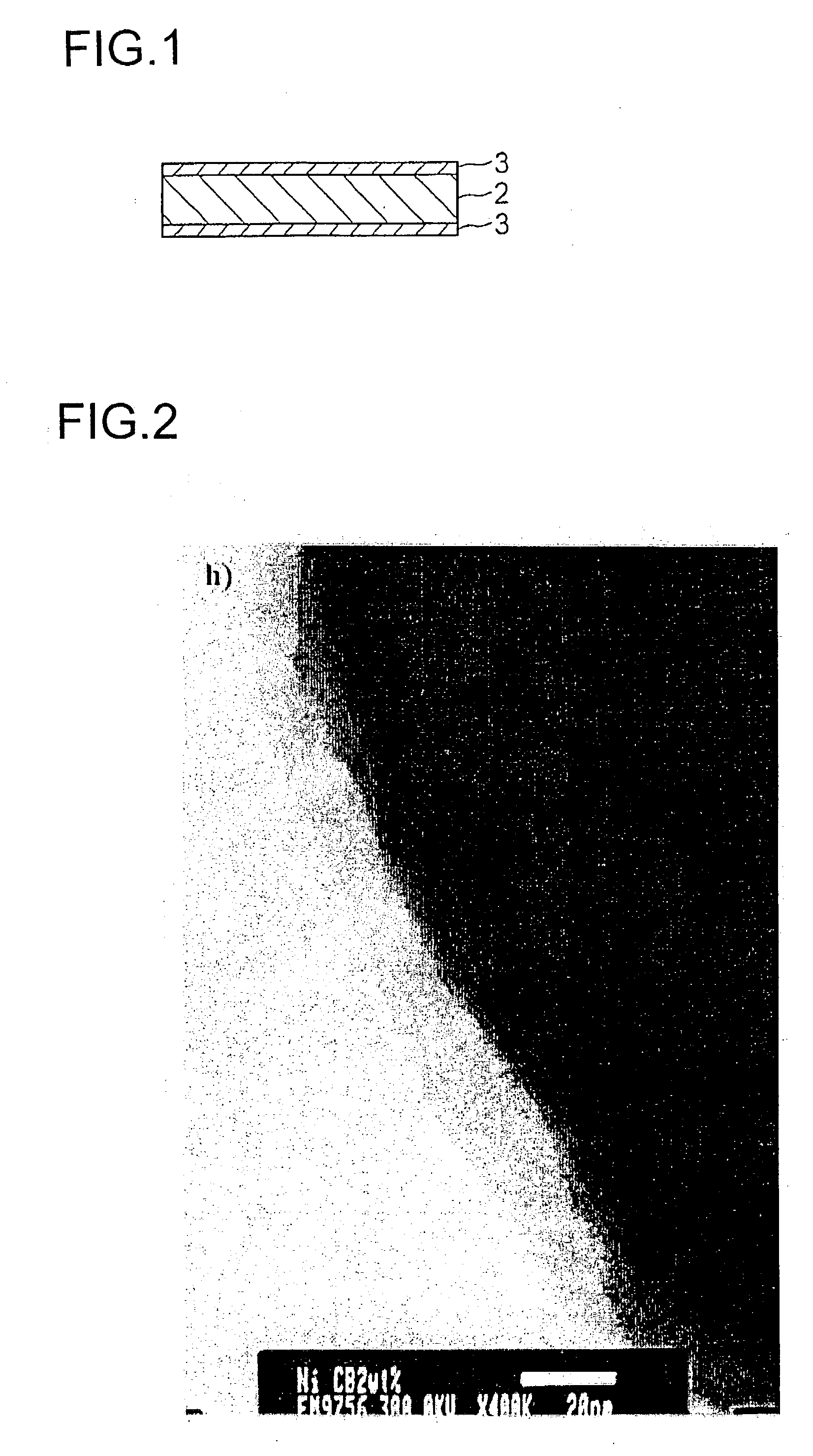Organic PTC thermistor
a positive temperature coefficient and thermistor body technology, applied in the direction of resistor manufacture, current responsive resistors, varistors, etc., can solve the problems of lack of reliability of organic ptc thermistors using metal particles, failure to provide satisfactory characteristics, and difficulty in increasing the resistance change rate, etc., to achieve the effect of reducing room temperature resistance, facilitating the manufacture of a thermistor body, and increasing bulk density
- Summary
- Abstract
- Description
- Claims
- Application Information
AI Technical Summary
Benefits of technology
Problems solved by technology
Method used
Image
Examples
example 1
[0087] There were furnished a linear low-density polyethylene synthesized in vapor phase in the presence of a metallocene catalyst (trade name Evolue SP2520 by Mitsui Chemicals, Inc., MFR 1.7 g / 10 min, mp 121.degree. C.) as the high-molecular weight organic compound; a paraffin wax (trade name Poly Wax 655 by Baker Petrolite, mp 99.degree. C.) as the low-molecular weight organic compound; a filamentary nickel powder (trade name Type 210 Nickel Powder by INCO Ltd., average particle diameter 0.5-1.0 .mu.m, bulk density approx. 0.8 g / cm.sup.3, specific surface area 1.5-2.5 m.sup.2 / g) as the metal powder; and carbon black (trade name MA100 by Mitsubishi Chemical Corp., average particle diameter approx. 22 nm) as the non-metallic powder.
[0088] First, the metal particles were thoroughly mixed with an alkoxysilane solution in accordance with the procedure described in JP-A 11-242812. The non-metallic powder was added to the dispersion and thoroughly mixed. Drying yielded metal particles su...
example 2
[0100] A thermistor device was fabricated as in Example 1 except that the buildup of non-metallic fines was 0.5% by weight of the metal particles, and 49% by volume of the high-molecular weight organic compound, 6% by volume of the low-molecular weight organic compound and 45% by volume of the non-metallic fine-covered metal powder were compounded. As compared with the device of Example 1, this thermistor device had a high content of metal particles and a low buildup of non-metallic fines relative to the metal particles. The device was similarly tested.
[0101] The initial resistance at room temperature was 7.0.times.10.sup.-3 .OMEGA. (resistivity 5.7.times.10.sup.-2 .OMEGA.-cm). The resistance marked a sharp rise at a temperature near 90.degree. C., with the resistance change being of about 11 orders of magnitude. These demonstrated a low room-temperature resistance and a high resistance change rate. With respect to variations of initial resistance at room temperature, of ten samples...
example 3
[0105] A thermistor device was fabricated as in Example 1 except that the buildup of non-metallic fines was 1.0% by weight of the metal particles, and 49% by volume of the high-molecular weight organic compound, 6% by volume of the low-molecular weight organic compound and 45% by volume of the non-metallic fine-covered metal powder were compounded. As compared with the device of Example 1, this thermistor device had a high content of metal particles and a low buildup of non-metallic fines relative to the metal particles. The device was similarly tested.
[0106] The initial resistance at room temperature was 8.0.times.10.sup.-3 .OMEGA. (resistivity 6.5.times.10.sup.-2 .OMEGA.-cm). The resistance marked a sharp rise at a temperature near 90.degree. C., with the resistance change being of about 11 orders of magnitude. These demonstrated a low room-temperature resistance and a high resistance change rate. With respect to variations of initial resistance at room temperature, of ten samples...
PUM
| Property | Measurement | Unit |
|---|---|---|
| density | aaaaa | aaaaa |
| density | aaaaa | aaaaa |
| specific surface area | aaaaa | aaaaa |
Abstract
Description
Claims
Application Information
 Login to View More
Login to View More - R&D
- Intellectual Property
- Life Sciences
- Materials
- Tech Scout
- Unparalleled Data Quality
- Higher Quality Content
- 60% Fewer Hallucinations
Browse by: Latest US Patents, China's latest patents, Technical Efficacy Thesaurus, Application Domain, Technology Topic, Popular Technical Reports.
© 2025 PatSnap. All rights reserved.Legal|Privacy policy|Modern Slavery Act Transparency Statement|Sitemap|About US| Contact US: help@patsnap.com


